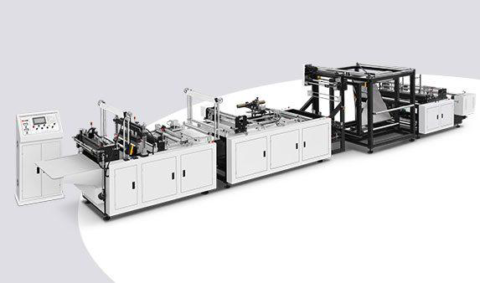In today’s digital age, the choice of a payment processor can significantly impact a business’s success. Whether you’re running an e-commerce store, a brick-and-mortar shop, or a service-based business, selecting the right payment processor is crucial for ensuring seamless transactions, enhancing customer satisfaction, and optimizing financial management. This article will guide you through the process of choosing the best payment processor for your business, focusing on key considerations, pricing models such as flat rate and interchange plus pricing, and the best credit card processors in 2024.
Understanding Payment Processing
Payment processing involves a series of steps that facilitate the transfer of funds from a customer’s bank account to the merchant’s account. It includes authorization, authentication, and settlement of transactions. A reliable payment processor ensures that this process is secure, efficient, and compliant with regulatory standards.
Key Considerations for Choosing a Payment Processor
1. Business Needs and Volume
Understanding your business needs and transaction volume is the first step in selecting a payment processor. Consider the following:
- Transaction Volume: Estimate your monthly transaction volume and average transaction size.
- Payment Methods: Determine the payment methods you need to accept (credit/debit cards, digital wallets, ACH payments, etc.).
- Business Model: Identify whether you need in-store, online, or mobile payment processing solutions.
2. Pricing Structures
Payment processors offer different pricing models. Understanding these structures can help you choose the most cost-effective option for your business.
Flat Rate Pricing Vs. Interchange Plus Pricing
As a merchant you should know the difference between flat rate pricing and intercchange plus pricing. This will not only help you to earn some extra profits but it is also a key consideration while choosing a processor.
Flat Rate Pricing
Flat rate pricing charges a fixed percentage per transaction, regardless of the card type or transaction amount. This model is straightforward and predictable, making it suitable for small businesses and startups.
Advantages:
- Simple and easy to understand.
- Predictable monthly costs.
Disadvantages:
May be more expensive for businesses with higher transaction volumes or larger average transaction sizes.
Interchange Plus Pricing
Interchange plus pricing is more complex but often more cost-effective for larger businesses. It includes the interchange fee set by the card networks (Visa, MasterCard, etc.) plus a fixed markup by the processor.
Advantages:
- Transparent and often cheaper for high-volume businesses.
- Detailed breakdown of fees.
Disadvantages:
- More complex billing statements.
- Requires understanding of interchange rates.
3. Security Features
Security is paramount in payment processing. Look for processors that offer robust security features such as:
- PCI-DSS Compliance: Ensures that the processor adheres to industry standards for data security.
- Encryption and Tokenization: Protects sensitive card information during and after transactions.
- Fraud Detection Tools: Monitors transactions for suspicious activity and minimizes the risk of fraud.
4. Integration and Compatibility
Ensure that the payment processor integrates seamlessly with your existing systems, such as your point-of-sale (POS) system, e-commerce platform, and accounting software. Compatibility with various platforms can streamline operations and reduce manual work.
5. Customer Support
Reliable customer support is crucial for resolving issues quickly and minimizing downtime. Look for processors that offer 24/7 support through various channels, such as phone, email, and live chat.
6. Reputation and Reviews
Research the reputation of potential payment processors by reading reviews and testimonials from other businesses. Look for processors with a proven track record of reliability and customer satisfaction.
Best Credit Card Processors in 2024
Choosing the best credit card processor involves evaluating the features, pricing, and reliability of different providers. Here are some of the top credit card processors in 2024:
1. Square
Overview:
Square is known for its simplicity and ease of use. It offers a range of payment solutions, including in-store, online, and mobile payments.
Key Features:
- Flat rate pricing (2.6% + 10¢ per transaction for in-person payments).
- No monthly fees or long-term contracts.
- Free POS software and hardware options.
- Robust reporting and analytics tools.
Best For:
Small businesses, startups, and those looking for a simple, all-in-one solution.
2. Stripe
Overview:
Stripe is a developer-friendly payment processor with powerful APIs for custom integrations. It’s ideal for online businesses and tech-savvy entrepreneurs.
Key Features:
- Interchange plus pricing (2.9% + 30¢ per transaction for online payments).
- Advanced fraud detection and security features.
- Supports a wide range of payment methods and currencies.
- Extensive customization options and integrations.
Best For:
E-commerce businesses, SaaS companies, and developers.
3. PayPal
Overview:
PayPal is a well-established payment processor with global reach. It offers solutions for both online and in-store payments.
Key Features:
- Flat rate pricing (2.9% + 30¢ per transaction for online payments).
- No setup or monthly fees.
- Integrated with popular e-commerce platforms.
- Comprehensive buyer and seller protection.
Best For:
Businesses with international customers, freelancers, and online merchants.
4. Shopify Payments
Overview:
Shopify Payments is a built-in payment processor for Shopify users, offering seamless integration with the Shopify platform.
Key Features:
- Interchange plus pricing (starting at 2.9% + 30¢ per transaction).
- No transaction fees for Shopify store owners.
- Integrated with Shopify’s POS system.
- Supports multiple payment methods, including credit cards and digital wallets.
Best For:
E-commerce businesses using the Shopify platform.
5. Helcim
Overview:
Helcim is known for its transparent pricing and excellent customer service. It offers solutions for both in-store and online payments.
Key Features:
- Interchange plus pricing with no hidden fees.
- Volume-based discounts.
- No long-term contracts or cancellation fees.
- Comprehensive reporting and management tools.
Best For:
Medium-sized businesses, retailers, and those looking for transparent pricing.
Steps to Choose the Best Payment Processor
Choosing the best payment processor involves careful consideration and evaluation. Follow these steps to make an informed decision:
1. Assess Your Business Needs
Start by assessing your business needs, including transaction volume, payment methods, and the type of business you run. Consider factors such as whether you need to accept in-store, online, or mobile payments and any specific features you require.
2. Compare Pricing Models
Evaluate the pricing models offered by different processors, such as flat rate and interchange plus pricing. Consider your transaction volume and average transaction size to determine which model is more cost-effective for your business.
3. Evaluate Security Features
Security is a critical consideration when choosing a payment processor. Ensure that the processor complies with PCI-DSS standards and offers robust security features such as encryption, tokenization, and fraud detection tools.
4. Check Integration and Compatibility
Ensure that the payment processor integrates seamlessly with your existing systems, such as your POS system, e-commerce platform, and accounting software. Compatibility with various platforms can streamline operations and reduce manual work.
5. Read Reviews and Testimonials
Research the reputation of potential payment processors by reading reviews and testimonials from other businesses. Look for processors with a proven track record of reliability and customer satisfaction.
6. Consider Customer Support
Reliable customer support is crucial for resolving issues quickly and minimizing downtime. Look for processors that offer 24/7 support through various channels, such as phone, email, and live chat.
7. Request a Demo or Trial
Many payment processors offer demos or trials of their services. Take advantage of these opportunities to test the features, ease of use, and performance of the processor before making a decision.
Conclusion
Choosing the best payment processor for your business is a crucial decision that can significantly impact your operations, customer satisfaction, and financial management. By understanding your business needs, comparing pricing models, evaluating security features, and considering integration and customer support, you can make an informed decision that aligns with your business goals.
In 2024, top credit card processors such as Square, Stripe, PayPal, Shopify Payments, and Helcim offer a range of features and pricing models to suit different business needs. Whether you’re a small business, an e-commerce store, or a medium-sized retailer, selecting the right payment processor can enhance your payment processing efficiency, improve customer satisfaction, and drive business growth.





